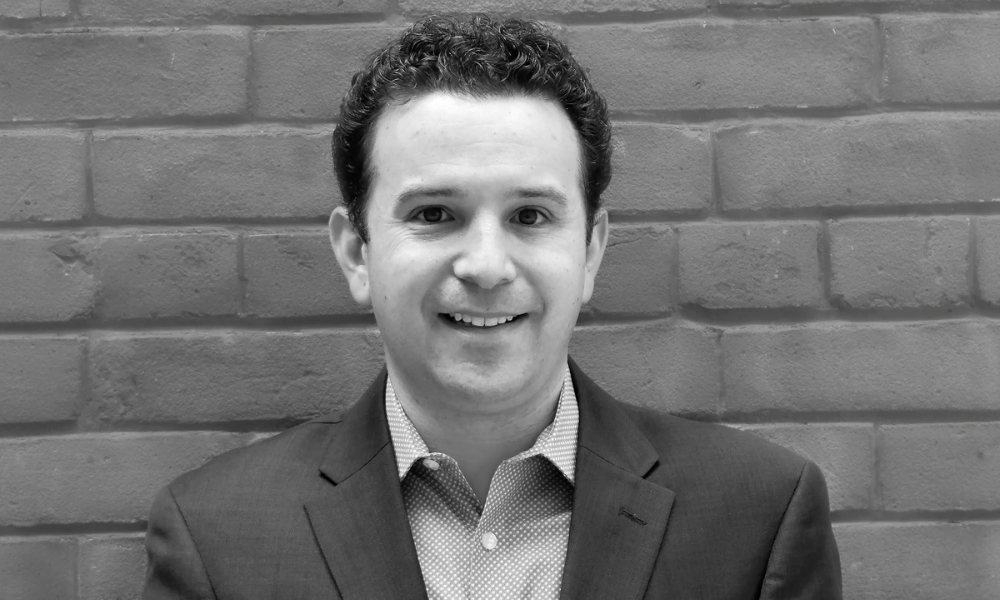What if an integrated approach to mental health with best-in-class virtual service could help us all?

It is looming. We read about it. We discuss it. And more than anything, we experience it. The pandemic has changed our daily routine drama-tically. And it is affecting most of us in significant ways. In this context, challenges regarding mental health issues have never been more topical than they are today.
New data from the Mental Health Commission of Canada (MHCC) and the Canadian Centre on Substance Use and Addiction suggests that the number of people in Canada reporting strong mental health has gone down 23 per cent, a drop from about two-thirds of the population to less than half. Almost two million (1.6 million) Canadians have expressed an unmet need for mental health care, and 7.5 million people in Canada are reporting living with a mental health problem or illness, found the 2017 report Strengthening the Case for Investing in Canada’s Mental Health System: Economic Considerations.
And many people still don’t have access to the right treatment, according to the Statistics Canada report Mental Health Care Needs released in 2019. But this reality is hopefully about to shift.
To be part of any new perspectives, it is up to the workplace to welcome new practices. "Workplaces are realizing that they have a large role in good mental health. Especially through COVID-19, organizations are thinking more thoroughly about the mental health of their team members,” says Dr. Dominik Nowak, faculty member at the University of Toronto and chair of the TELUS Medical Advisory Council.
Virtual care to the rescue
Depression levels are more prevalent than ever in our country, according to a 2020 Centre for Addiction and Mental Health (CAMH) survey with 1,003 respondents. By age 40, around one in two Canadians will have or has had a mental illness.
The survey found that one in four Canadians feels lonely occasionally or most of the time. And as many again are still feeling moderate to extreme levels of anxiety.
Among them, respondents with children in the household reported higher levels of anxiety compared to those without children in this age group. Women reported higher levels of loneliness compared to men.
“We are also finding disparities in essential workers and young people. The good news is that leaders in organizations want to do better in recognizing this shared problem, exploring solutions and changing culture,” says Nowak.
Aiming for new practices
It has been a dream for HR strategists to orient their team members toward good health care, supported by good primary care and a dedicated team of mental health specialists. Psychiatrists, psy-chologists, family doctors, social workers and other health professionals are helping many companies these days to improve their policies and provide adequate resources for individuals suffering from mental disorders, as well as with people looking to stay proactive around their mental health.
“As a society, it is important for us to break down the friction between people thinking we need help and actually reaching out for professional support,” says Nowak.
With the pandemic, we all need, more than ever, to have that trusted voice on the other end of a device. We are entering into an era where each Canadian should be connected to their trusted health-care professional or to a physical clinic with just one click.
To make it happen, everyone has a role to play. For organizations, HR experts are first in line to assist in raising awareness of the benefits of good mental health practices and implementing strategies to maintain a healthy work-ing environment. The first step in encouraging virtual mental health care is in making sure that people are fully aware of the tools and programs that are available and how to utilize them.
“Everyone has a part to play. Of course, workplaces have a key role in fostering a culture that promotes good health, kindness and support,” says Nowak.
In a workplace context, we are all partly responsible for raising awareness. "We can talk about a sort of ‘social contract’ between employers and employees to recognize and promote good health,” he says. “We have to normalize mental health as part of our shared experience. In that sense, our shared humanity makes us all part of the way forward."
On a continuum
Previously, mental health in the work-place was seen in a more global way. Some organizations that may have looked at the question of wellness with a certain stigma or on a fairly basic level are now looking at it in a much more nuanced, tailored way.
“We are looking at mental health as a continuum and from the lens of health promotion,” says Nowak.
“It is not only a matter of being well or feeling bad; it is normal for us all to be in different parts of this continuum, day by day. As HR leaders, our work is to proactively support people wherever they might find themselves on the continuum of mental health. It’s important to have tailored strategies.”
Are we actually listening?
We are all becoming more comfortable talking about mental health in the workplace.
“It is a shared responsibility, but I do believe that kind of leadership needs to be supported at the top. It is up to the leaders to set the culture where these conversations are seen as proactive and genuine,” says Nowak.
Innovative tools and models of care are constantly being developed and implemented. But one of the first and very basic skills is our capacity to listen. “When we ask, ‘How are you doing?’” he says, we have to ask it in a way that signals authenticity, listen for the answer and normalize ways to seek further help.
“The people we work with are highly resilient, talented, competent people. Even so, it’s OK for anyone to struggle and be in that yellow, orange or red zone sometimes. As leaders, it’s on us to make sure they’re supported,” says Nowak.
We have the tools to improve mental health treatment in Canada — one citizen, one employee and one employer at a time. What if we succeed? What a wonderful world we may soon live in.





